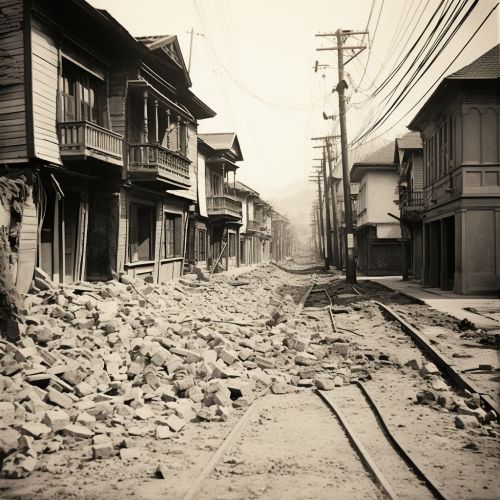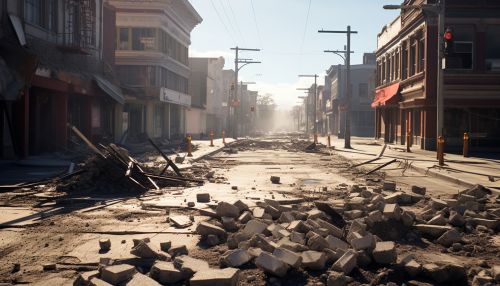List of earthquakes
Introduction
An earthquake is a sudden and violent shaking of the ground, often caused by the movement of the Earth's tectonic plates. These natural phenomena can cause significant damage and loss of life, particularly in regions that are not well-prepared to handle such events. This article provides a comprehensive list of notable earthquakes throughout history, detailing their causes, impacts, and the scientific understanding gleaned from their study.


Prehistoric Earthquakes
Our understanding of prehistoric earthquakes comes from the study of paleoseismology, which involves the examination of geological evidence to determine the occurrence and severity of past seismic events. One of the earliest known earthquakes occurred in Mesopotamia, around 3,000 BCE. This earthquake, estimated to have been of magnitude 8.5, is believed to have caused the collapse of the early city-state of Ur.
Ancient Earthquakes
The first recorded earthquake occurred in China in 1177 BCE. The Zhou Dynasty's court astronomers noted the event in their chronicles. However, the most famous ancient earthquake is perhaps the one that struck the city of Sparta in Greece in 464 BCE. This earthquake, estimated to have been of magnitude 7.5, led to significant political upheaval in the region.
Medieval Earthquakes
During the Middle Ages, several significant earthquakes occurred. The 1138 Aleppo earthquake in Syria is considered one of the deadliest in history, with an estimated death toll of 230,000. In 1556, the Shaanxi earthquake in China, believed to be the deadliest ever, killed approximately 830,000 people.
Modern Earthquakes
The modern era has seen numerous devastating earthquakes. The 1906 San Francisco earthquake and the 2010 Haiti earthquake are among the most notable. The 2004 Indian Ocean earthquake and tsunami, which killed over 230,000 people across 14 countries, is considered one of the deadliest natural disasters in recorded history.
Understanding Earthquakes
The study of earthquakes, known as seismology, has greatly advanced our understanding of these natural phenomena. Scientists use seismometers to measure the intensity of earthquakes, and the data collected helps in predicting future seismic events.
